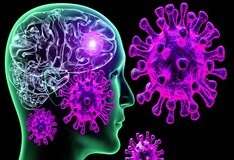A Season of Stroke: A New Era in Telemedicine Diagnosis and Treatment
Winter 2021

David Liebeskind, MD
Professor of Neurology
Director of the UCLA Stroke Service
At the UCLA Stroke Center, March 2020 roared in like a lion with COVID-19 stroke cases suddenly becoming a dramatic and important focus. These COVID-associated strokes included arterial blockages, clots in veins, bleeding into the brain, and a variety of inflammatory disorders. From our Stroke Center to regional stroke networks, societal initiatives and global registries, we collaborated on research to better understand the disease, clinical features, and underlying biological mechanisms of COVID-19 in the brain. Our research groups initiated studies with tissue from COVID patients and laboratory models of human blood vessels, to understand how the virus caused stroke. Such work continues in myriad forms, as we strive to learn from each case and identify new opportunities to combat this infectious, inflammatory disorder that may lead to neurological injury.
COVID-19 has forced us to focus on transitions, including the many ways we see patients and deliver care, before, during and after stroke. Telemedicine has been implemented for stroke care at UCLA throughout every phase, modernizing how we provide diagnoses and treatments at each step. Brain imaging of stroke is sent directly to our mobile platforms within seconds of a CT or MRI, often as the patient is still in the scanner. Continuous, virtual stroke care is no longer challenged by physical barriers, elevators or dispersed staff. Even during the peaks of each COVID-19 wave, when extreme precautions and distancing measures were implemented, we were able to connect patients with families, their loved ones and virtual visitors from around the globe. There is the term “bench to bedside” to capture how academic medicine develops new therapies, meaning that the ultimate goal is to begin with bench research in the lab and deliver that treatment discovery to the patient at the bedside. In the COVID-19 pandemic, we went “bedside to worldwide”, as we had virtual patient conferences with family in many cases across the globe. On discharge from hospital, virtual visits made it possible for us to see our stroke patients in rehabilitation centers, nursing facilities and at home within days. At these virtual care visits with our doctors and at the many visits thereafter, we have had the unique opportunity to directly view, show, and teach all those involved, including patients. We explore areas of injury that we seek to prevent, we illustrate vessel blockage and show how blood flow can be measured in the brain.
As the winter COVID-19 surge of 2021 now ebbs, the UCLA Stroke Center staff, providers and research teams are far more experienced than even a year ago. We have reflected upon and revisited almost every aspect of what we do and how we address stroke for our patients. Perhaps most importantly, we have learned how to deliver stroke care with each logistic or medical challenge that arises.